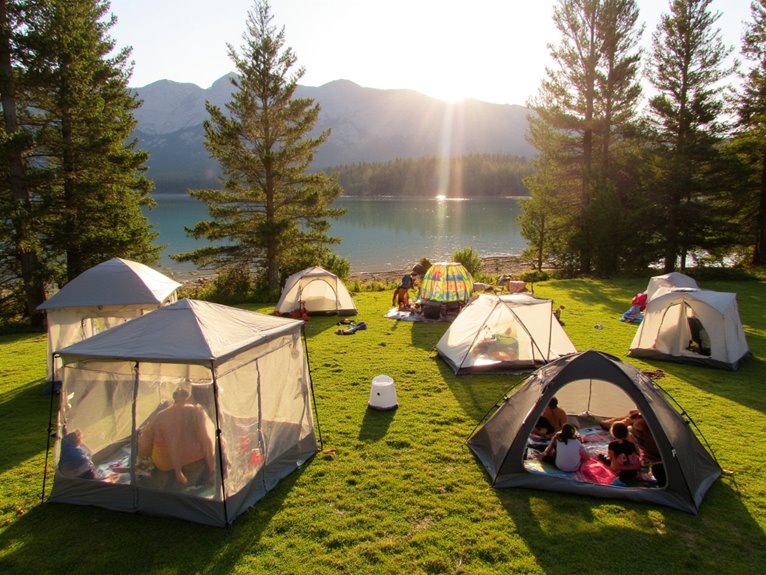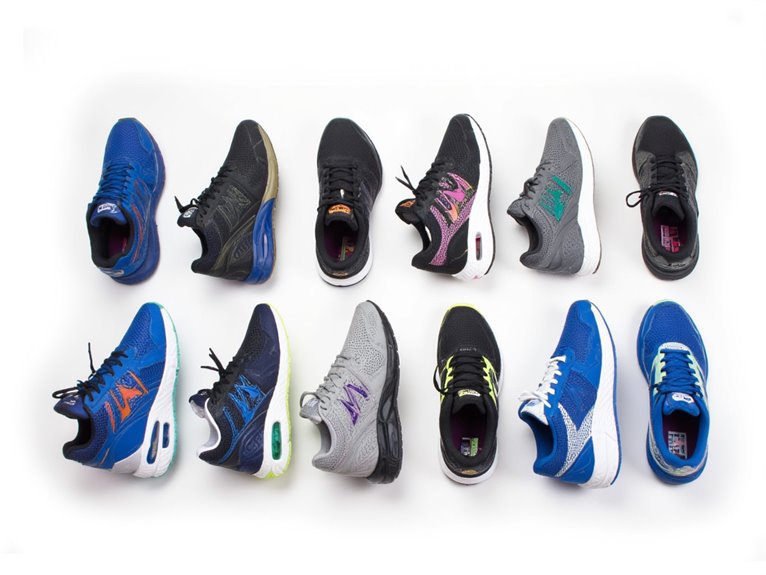How Hot Is Too Hot Camping?
When the heat index exceeds 104°F (40°C), the risks of heat-related illnesses, including heat stroke, dramatically increase, making it essential for campers to take proactive measures to mitigate these dangers. Temperatures above 90°F (32°C) require extra precautions to prevent heat-related illnesses. Recognizing warning signs, staying hydrated, and planning strategically are essential. As the mercury rises, so does the risk of heat stroke, which can be fatal if left untreated. To have a safe outdoor experience, it's imperative to understand the risks and take necessary precautions – and there's more to learn about beating the heat while camping.
We are supported by our audience. When you purchase through links on our site, we may earn an affiliate commission, at no extra cost for you. Learn more. Last update on 15th January 2026 / Images from Amazon Product Advertising API.
Heat Stroke Risks in Camping
Camping in extreme heat can be deadly, with heat stroke claiming the lives of unsuspecting outdoor enthusiasts who underestimate the risks of high temperatures.
The human body is susceptible to heat-related illnesses when the mercury rises above 90°F (32°C). Prolonged exposure to direct sunlight, dehydration, and inadequate ventilation can exacerbate the situation.
It is vital to recognize the warning signs of heat stroke, including dizziness, nausea, headaches, and fatigue. If left untreated, heat stroke can lead to organ failure, brain damage, and even death.
As a responsible camper, it is imperative to take proactive measures to mitigate heat-related risks, such as staying hydrated, seeking shade, and adjusting your itinerary to avoid the hottest part of the day.
Temperature Limits for Campers
When camping in extreme temperatures, it is vital to understand the temperature limits that pose a risk to campers' health and safety.
Desert camping, in particular, presents unique hazards that can escalate quickly, making it essential to recognize the warning signs of heat stroke.
Desert Camping Hazards
Exposed to extreme temperatures, desert campers face a heightened risk of heat-related illnesses, particularly during the summer months when temperatures can soar above 120°F (49°C).
The desert environment poses unique challenges, including dehydration, heat exhaustion, and sunstroke.
Campers must take precautions to stay cool and hydrated, such as seeking shade, wearing light-colored clothing, and drinking plenty of water.
This is crucial to monitor temperature and humidity levels, avoiding outdoor activities during the hottest part of the day.
Additionally, desert campers should be aware of the risks associated with sandstorms, which can reduce visibility and make it difficult to navigate.
Heat Stroke Risks
High temperatures can be particularly deadly for campers, and understanding the risks of heat stroke is crucial to avoiding this potentially life-threatening condition.
When the body's temperature regulation system is overloaded, heat stroke can occur, causing damage to the brain and other critical organs.
The risk of heat stroke increases when the heat index exceeds 104°F (40°C).
Campers should be aware of the warning signs, including dizziness, nausea, headaches, and confusion.
If left untreated, heat stroke can be fatal.
It is crucial for campers to take preventive measures, such as staying hydrated, taking regular breaks in shaded areas, and wearing lightweight, light-colored clothing.
Summer Camping Precautions
During the summer months, campers should be mindful of the temperature limits that can impact their safety, with temperatures above 90°F (32°C) requiring extra precautions to prevent heat-related illnesses.
This is vital to monitor weather forecasts and plan accordingly.
Campers should avoid strenuous activities during the hottest part of the day (usually between 11 am and 3 pm) and seek shade or air-conditioned spaces when possible.
Wearing lightweight, light-colored clothing, and staying hydrated by drinking plenty of water are also vital.
Additionally, campers should be aware of the signs of heat exhaustion, such as dizziness, nausea, and headaches, and take immediate action if they or someone in their group exhibits these symptoms.
Camping in Extreme Heat Safely
When camping in extreme heat, it's essential to prioritize safety to avoid heat-related illnesses.
To do so, it's vital to be aware of the risks associated with high temperatures, maintain proper hydration levels, and plan your camping schedule strategically.
Beat the Heat Risks
Camping in extreme heat requires a proactive approach to mitigate the risks associated with heat-related illnesses, which can be debilitating and even life-threatening if left unchecked.
To beat the heat risks, it's essential to take preventive measures to guarantee a safe and enjoyable camping experience.
Monitor weather forecasts and heat indexes to plan accordingly.
Schedule outdoor activities during cooler parts of the day, such as early morning or late evening.
Wear lightweight, light-colored, loose-fitting clothing to reflect the sun's rays.
Take regular breaks in shaded areas to avoid direct sun exposure.
Avoid using heavy or dark clothing that can trap heat.
Stay Hydrated Always
Proper hydration is critical in extreme heat, as even mild dehydration can exacerbate the risks associated with heat-related illnesses and substantially impair outdoor performance.
When camping in extreme heat, it's essential to drink plenty of water regularly, even if you don't feel thirsty. Aim to consume at least 8-10 glasses of water per day, and consider adding electrolyte-rich drinks to your hydration routine.
Monitor your urine output and color; if it's dark yellow or you're not urinating frequently, it may be a sign of dehydration.
Bring a refillable water container and know the location of nearby water sources to maintain a steady supply.
Camp Smart Schedule
To minimize the risks associated with extreme heat, plan your outdoor activities strategically, focusing on the cooler morning and evening periods when the sun's rays are less intense. This allows you to conserve energy and reduce the risk of heat-related illnesses.
Rise early and hike or engage in strenuous activities between 6:00 am and 10:00 am.
Take a mid-day break to rest and hydrate between 11:00 am and 3:00 pm.
Resume outdoor activities during the cooler evening hours between 4:00 pm and 7:00 pm.
Avoid outdoor activities during the hottest part of the day (usually between 11:00 am and 3:00 pm).
Take regular breaks to rest and rehydrate throughout the day.
Health Risks for Vulnerable Groups
Elderly individuals, young children, and people with pre-existing medical conditions are disproportionately affected by temperature-related health issues while camping.
These vulnerable groups are more susceptible to heat stress, heat exhaustion, and heat stroke due to their compromised physical resilience.
As a result, they require extra care and attention when camping in hot weather. It's essential to monitor their body temperature, provide regular hydration, and guarantee they take frequent breaks in shaded areas.
Moreover, they should avoid strenuous activities during peak sun hours and wear loose, light-colored clothing to stay cool.
In addition, they should prioritize staying hydrated and taking rest breaks to stay safe.
Dehydration Warning Signs Outdoors
Many campers underestimate the risk of dehydration, but recognizing its warning signs is essential to preventing serious health complications outdoors.
Dehydration can creep up quickly, especially in hot weather, and can lead to severe consequences if left untreated. Knowing the warning signs is imperative to taking prompt action.
- Dark yellow or amber-colored urine
- Dry mouth and throat
- Fatigue, dizziness, or lightheadedness
- Headaches or nausea
- Decreased urine output or no urine output
Beating the Heat While Camping
When camping in hot weather, maintaining a comfortable body temperature is essential to prevent heat-related illnesses and enjoy a safe outdoor experience.
To beat the heat, prioritize hydration by drinking plenty of water throughout the day.
Wear lightweight, light-colored, loose-fitting clothing that allows for good airflow and helps to reflect the sun's rays.
Stay in shaded areas, especially during peak sun hours (11am-3pm), and take regular breaks to cool off.
Avoid strenuous activities during the hottest part of the day and consider setting up a canopy or umbrella to provide extra shade.
Finally, monitor your body temperature and watch for signs of heat exhaustion, such as dizziness, nausea, and headaches.




